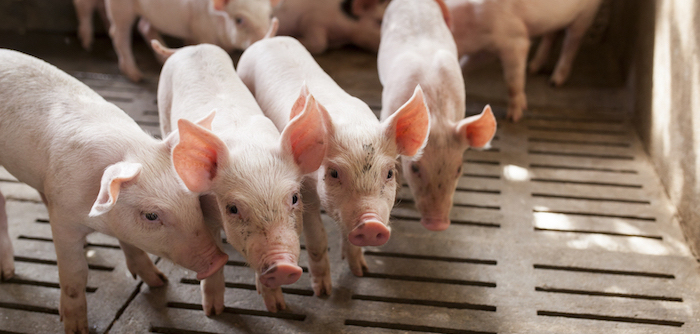Compulsory labelling of system of production could further complicate an already confusing labelling system for consumers, the National Pig Association (NPA) has warned.
The NPA has also stressed that labelling pork simply by system needs to be driven by welfare outcomes as the system alone does not determine the welfare of the animal.
Calls by Compassion in World Farming (CIWF) for food to be labelled with phrases like ‘intensive indoors’ or, for milk, ‘zero grazing’ were reported in an article in the Times over the weekend. Groups like CIWF are keen to follow the example of the egg sector, where system labelling has been successfully introduced.
The Times article quoted Defra Secretary Michael Gove, who pledged to reform labelling laws. He said: “Consumers deserve better information. We need to be clearer in our labelling about where food comes from and how food is produced. Better information can help us make the right choices for health and for the environment.”
The article also put the spotlight on Red Tractor, noting that farmers were ‘allowed to keep animals indoors permanently’ under its rules. A feature on BBC’s Farming Today last week highlighted consumers’ surprise that slatted pig systems were permitted under Red Tractor rules.
NPA response
The NPA said it understood why some people and groups wanted system of production labelling, but said it would be very difficult to implement for pigs.
NPA chief executive Zoe Davies said the pig sector defined several different methods of production about eight years ago as a voluntary scheme in an effort to help consumers understand the various systems. It did not prove possible to do this for indoor production because of the plethora of indoor systems that exist.
Zoe said: “Unlike in the egg sector, there is a wide array of pig production systems, incorporating outdoor and various indoor systems across pigs’ lives. It would therefore be very difficult to provide an accurate, standardised description of how a pig has been reared in a single label.
“Various consumer surveys and focus groups have shown that there are too many labels out there already that people don’t understand. The challenge is to explain the ones we do have more effectively. We also understand that consumers expect the retailer to take care of the standard of production and don’t actually want to know the detail.
“In addition to this, there is a significant amount of meat that is sold at a lower tier to the one it was produced for. For example, not all of the meat from a free range or organic pig would be sold as such due to lack of demand. Many cuts would be sold as ‘standard tier’ at a lower price, so there are questions as to how this would be labelled.
“The British pig industry is incredibly proud of its welfare standards and the industry works very hard to ensure these high standards are maintained across all systems.
“Our concern would be that this is used to promote one type of system over another. In reality production system does not define welfare, which is the result of various factors, with stockmanship and veterinary care to the fore.
“Rather than focus on system of production, we believe that labelling should be linked directly to welfare outcomes, as they reflect the welfare of animals far more accurately regardless of the system they are reared within. The UK pig sector is leading the way in this area, with regular assessment of welfare outcomes on farm as part of the Real Welfare scheme.”




